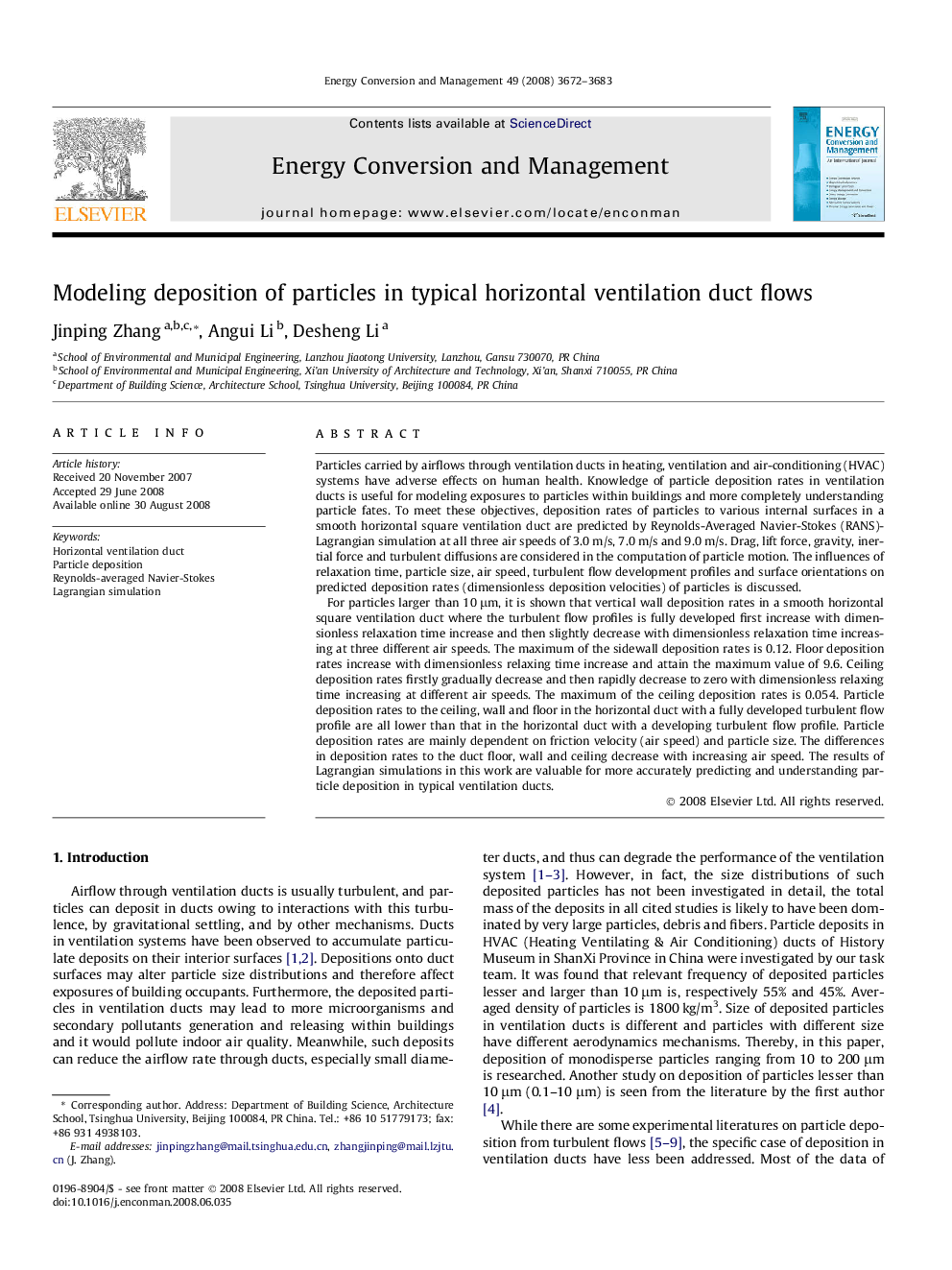| کد مقاله | کد نشریه | سال انتشار | مقاله انگلیسی | نسخه تمام متن |
|---|---|---|---|---|
| 772741 | 897727 | 2008 | 12 صفحه PDF | دانلود رایگان |

Particles carried by airflows through ventilation ducts in heating, ventilation and air-conditioning (HVAC) systems have adverse effects on human health. Knowledge of particle deposition rates in ventilation ducts is useful for modeling exposures to particles within buildings and more completely understanding particle fates. To meet these objectives, deposition rates of particles to various internal surfaces in a smooth horizontal square ventilation duct are predicted by Reynolds-Averaged Navier-Stokes (RANS)-Lagrangian simulation at all three air speeds of 3.0 m/s, 7.0 m/s and 9.0 m/s. Drag, lift force, gravity, inertial force and turbulent diffusions are considered in the computation of particle motion. The influences of relaxation time, particle size, air speed, turbulent flow development profiles and surface orientations on predicted deposition rates (dimensionless deposition velocities) of particles is discussed.For particles larger than 10 μm, it is shown that vertical wall deposition rates in a smooth horizontal square ventilation duct where the turbulent flow profiles is fully developed first increase with dimensionless relaxation time increase and then slightly decrease with dimensionless relaxation time increasing at three different air speeds. The maximum of the sidewall deposition rates is 0.12. Floor deposition rates increase with dimensionless relaxing time increase and attain the maximum value of 9.6. Ceiling deposition rates firstly gradually decrease and then rapidly decrease to zero with dimensionless relaxing time increasing at different air speeds. The maximum of the ceiling deposition rates is 0.054. Particle deposition rates to the ceiling, wall and floor in the horizontal duct with a fully developed turbulent flow profile are all lower than that in the horizontal duct with a developing turbulent flow profile. Particle deposition rates are mainly dependent on friction velocity (air speed) and particle size. The differences in deposition rates to the duct floor, wall and ceiling decrease with increasing air speed. The results of Lagrangian simulations in this work are valuable for more accurately predicting and understanding particle deposition in typical ventilation ducts.
Journal: Energy Conversion and Management - Volume 49, Issue 12, December 2008, Pages 3672–3683